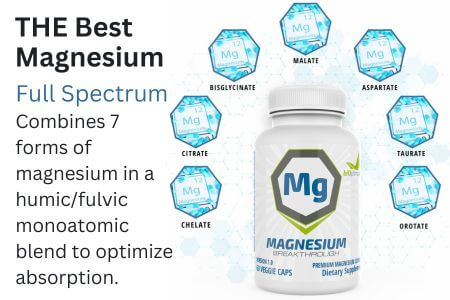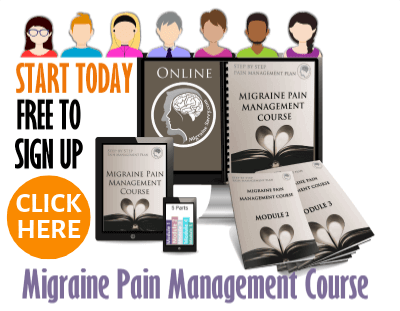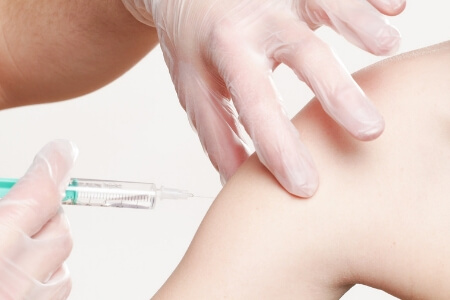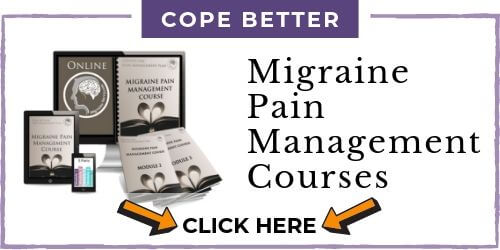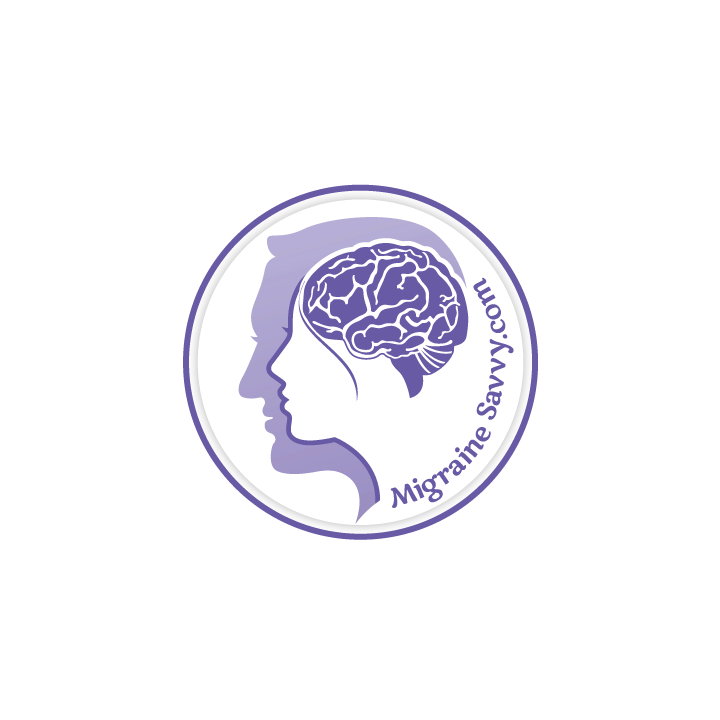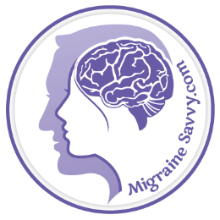- Home
- Medications
- PEA Migraine Headache Medication
COMPLETE MAGNESIUM SUPPORT
My Top Choice - Magnesium Breakthrough - The ONLY supplement with all 7 essential magnesium types in one formula. Most only have 1-2 types, leaving you deficient.
How To Prevent Attacks With PEA Migraine Headache Medication
I can almost bet you have not heard of this migraine headache medication that is being used to treat migraines in Europe. Successfully! Over one million patients have used this treatment for various syndromes associated with chronic pain and found success.
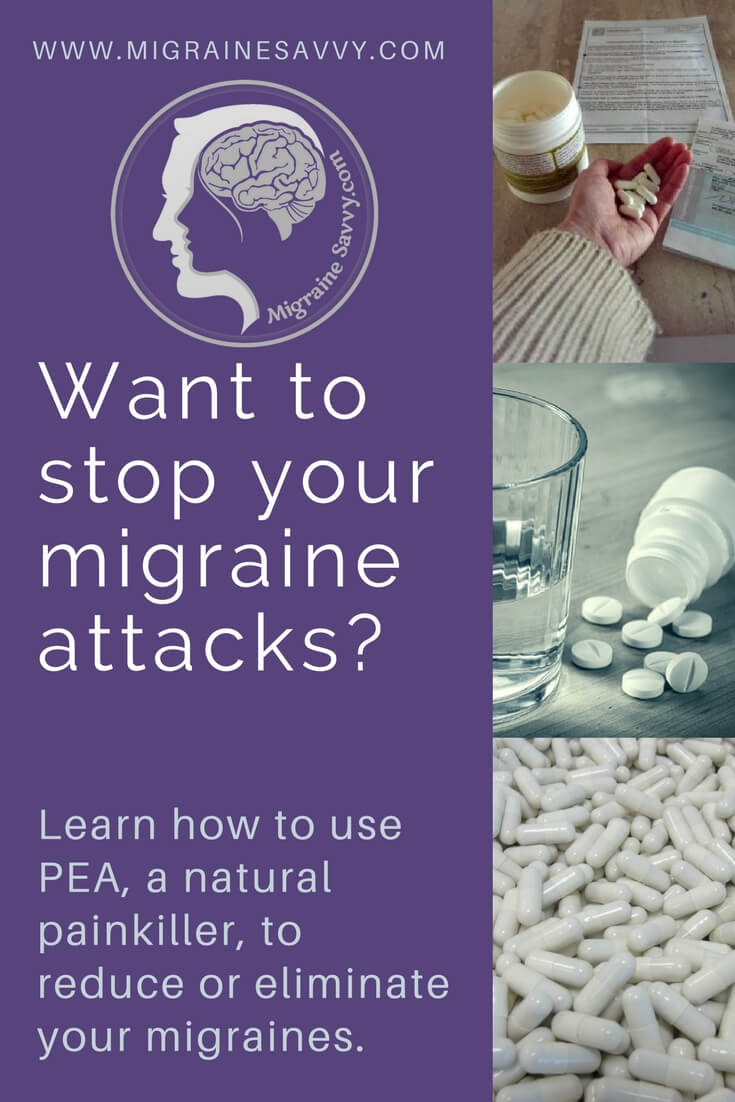 How you can prevent attacks using PEA as a migraine headache medication @migrainesavvy
How you can prevent attacks using PEA as a migraine headache medication @migrainesavvy
NEWSFLASH... it's made from a natural food substance. So it's medical migraine food!
I can’t tell you how excited and hopeful I was a while back when my functional medical doctor (aka expensive!) said "have you tried PEA?"
Confused, I replied “No. What is it?”
She handed me the sheet from the compounding chemist, the only one in Australia from what I can gather, that is supplying this product. Palmitoylethanolamide for Nerve Pain or Migraine, is the title.
PEA is a new migraine headache medication that sounds very, very promising. New to me, but it's been around awhile. Keep reading, all the links are below.
My research says it is made from soybean lecithin, peanut meal, and egg yolk. It is not accepted by the FDA in America (at time of writing), and it’s only available through compounding chemists here in Australia. But you can get it on Amazon! Here's the link.
My #1 Choice in Magnesium Supplements
The chemists’ fact sheet says that “PEA is a food supplement based on a natural and fatty-acid like compound, found in eggs and milk.
The substance Palmitoylethanolamide (PEA) is a physiologically active molecule that the body naturally produces in small amounts.”
It cost me $75.00 for 200 capsules.
That lasts 50 days if you take 4 a day. Are you excited yet? Have you heard of this being used for migraines? Have you tried it? If so click here to share your story.
This migraine headache medication could change your life, or at the very least provide a very significant reduction in pain.

PEA is a Natural Pain Killer
Palmitoylethanolamide is not a new substance. In fact it was first isolated from soybean lecithin, egg yolk and peanut meal back in 1954. [4]
According to the compounding chemist Palmitoylethanolamide (PEA) is a glial cell modulator. "Glial cells are Central Nervous System cells which release many inflammatory substances that act upon neurons, amplifying pain (Watkins and Maier, 2002). With time, PEA modulates (or tones down) pain." [1]
PEA has substantial body of evidence:
40 clinical trials in approx 6,000 subjects... and 350 references in PubMed over the past fifty years.
~ Jan Hesselink and Thecia Hekker (cited in Johnson, 2014)
PEA is well studied and well documented. The body produces it on demand to calm down inflammation where ever it occurs. It heals over-stimulated neurons and returns them to normal, just what we need to help stop migraines.
PEA was largely ignored despite its success. Jan M. Keppel Hesselink, (Professor of Molecular Pharmacology, consultant and private clinic, Institute for neuropathic pain, Netherlands and University at Witten/Herdecke, Department of Human Medicine) has studied PEA and produced several review papers.
He says that our society on the whole often dismisses new unfamiliar yet effective treatments that don’t fit into the status-quo. Even though numerous studies were done from 1957 to 1992, it was not taken seriously until Nobel Laureate Levi-Montalcini’s paper in 1993 validated PEA’s effects in mast cells. [4]
To my understanding it is being widely used in Europe for the treatment of migraines with great success. I am always sad to learn about natural migraine headache medication not being made available to all of us sufferers.
As you know I prefer to take natural migraine headache medication over prescription drugs, but Naramig from the Triptan family of designer drugs for migraines is what works for me.
My Results From This New Migraine Headache Medication
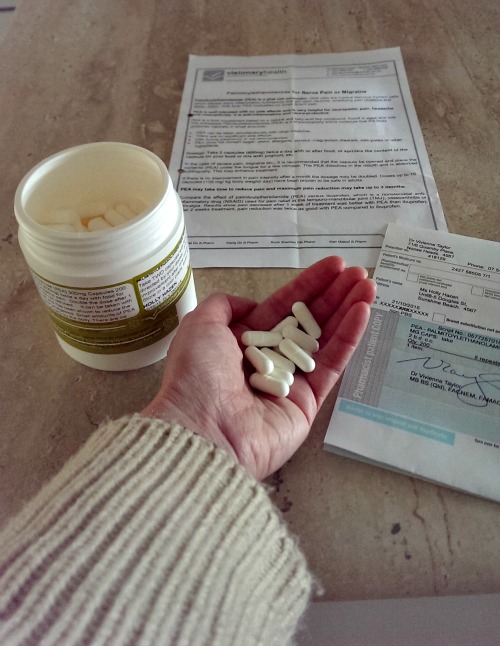
Drum roll...
The chemist told me that PEA is a derivative of palm oil, according to the manufacturer.
This was after I called him to tell him I was having an allergic reaction.
I was quite alarmed as the hot, red, itchy, rash appeared on my face.
More specifically it came up across the ears, nose and cheeks. Almost in a straight line like I had been sunburned.
On my arms: elbows down the front of my forearms and across the knuckles.
Hot, hot, hot and itchy. The skin on my forearms raised up and turned white like it had been burnt, but there was no fluid under it.
And on the top of my knees. Sorry... too much information?
I have never had a reaction like this. I just laid on the couch and waited to see if my throat started to swell up. But very luckily it did not. The hot flash started about forty minutes after I took the PEA after breakfast, and then it only lasted for about 40 minutes.
It left and I cooled down, as quickly as it came, it went. Very strange.
I have now pondered for much too long about whether to take it again. I’d like to hear if you have tried this to stop your migraines and your results.
 Keep Getting Up No Matter How Many Times You Get Knocked Down @migrainesavvy
Keep Getting Up No Matter How Many Times You Get Knocked Down @migrainesavvyDon't let my results stop you from seeing if this migraine headache medication cures your migraines forever. That is my wish for you ... A PAIN FREE LIFE!
Here is the link to a brand I fully trust, that's available on Amazon - PEA -Palmitoylethanolamide.
Dosage Directions
PEA has proven to be safe to take with other medications. There have been no significant side effects recorded in a number of case studies to date. However, it is not recommended to be taken during pregnancy. It does not contain: sugar, yeast, allergens, sorbitol, magnesium stearate, salicylates or other fillers.
Take 2 capsules (300mg x 2) twice a day with or after food. If you cannot swallow pills, you can sprinkle the contents of the capsules on your food or mix it with yogurt (or something).
For severe migraine pain in acute attacks you can open the capsule and place the contents of the PEA cap under your tongue and wait for a few minutes before you swallow.
The PEA will dissolve in your mouth and be absorbed sublingually. This should enhance the effectiveness of the treatment.
If there is no improvement or pain reduction after one month you can double the dose. The studies have shown that doses up to 16 capsules a day – 100 mgs per kilogram of body weight per day – is considered safe.
It may take up to three months for the PEA to reach its maximum effectiveness and for you to have results with pain reduction.
Scientific Studies Prove PEA Is Better Than Ibuprofen
Study results show that pain decreased after one week of treatment proving that PEA was better than ibuprofen.
After two weeks, the pain reduction was twice as good with PEA compared to ibuprofen.
Palmitoylethanolamide (PEA) has been shown to bind to a receptor in the cell nucleus. The clinical trials proved that it executes a number of biological functions related to chronic and neuropathic pain and inflammation.
"These include peripheral neuropathies such as diabetic neuropathy, chemotherapy-induced peripheral neuropathy, carpal tunnel syndrome, sciatic pain, osteoarthritis, lower back pain, failed back surgery syndrome, dental pains, neuropathic pain in stroke and multiple sclerosis, chronic pelvic pain, post-herpetic neuralgia, and vaginal pains." [3]
The clinical trials also had little to no side effects, and reported no drug to drug interactions.
PEA is an endogenous modulator as well as a compound found in food, like eggs and milk.
Over a million patients have found effective relief for their chronic pain conditions that had previously responded poorly to standard therapies and medications.
PEA can be used synergistically with other pain treatments and has been shown to reduce the reliance on narcotic analgesics.
This study supports a potential for therapeutic use for PEA as a migraine headache medication. It is published in Neuropsychopharmacology (2007):
- Endocannabinoids in chronic migraine: CSF findings suggest a system failure. Click on the link to read the full article.
My #1 Choice in Magnesium Supplements
Other Benefits Of Analgesic and Anti-inflammatory Nutraceutical PEA
Besides being a neuroprotective, anti-inflammatory, pain reliever:
• PEA has the ability to suppress overactive mast cells that release inflammatory histamine and cytokines into the body. More specifically, the analgesic and anti-inflammatory nutraceutical PEA holds great promise for reducing the inflammatory response in the treatment of chronic pain states like interstitial cystitis, bladder pain and irritable bowel syndrome. [1]
• PEA has an immune enhancing effect and could be used to treat flu and respiratory infections.
• The neuroprotective effects of PEA come from its effect on the down regulating the inflammatory cascade. It could have strong impacts on these neurodegenerative diseases: Alzheimer’s, Parkinson’s, Multiple Sclerosis, AND MIGRAINE!
(The website Migraine Savvy and its author is not associated with any PEA products in any way.)
WANT MORE TIPS? Subscribe to my newsletter and follow along on Facebook and Pinterest for all of the latest updates.
MIGRAINE MEDICATIONS Related Articles
How to be more MIGRAINE SAVVY right now...
PEA Migraine Headache Medication Resources:
1. Malouf, Alan (B .Pharm) Visionary Health Compounding Chemist. Australian Source - Hamilton NSW. Ph (02) 4968-5081. PEA - Other Benefits 2018.
2. Palmitoylethanolamide For Pain (2016) About Palmitoylethanolamide (PeaPure): introduction and use of a natural painkiller. Accessed 24 June 2016.
3. Hesselink, Jan M Keppel, and Thecla AM Hekker. “Therapeutic Utility of Palmitoylethanolamide in the Treatment of Neuropathic Pain Associated with Various Pathological Conditions: A Case Series.” Journal of Pain Research 5 (2012): 437–442. PMC. Web. 12 Nov. 2015. Link - US National Library of Medicine, National Institute of Health (2012).
4. Johnson, Cort (2014) Palmitoylethanolamide (PEA) – A Medical Food for Fibromyalgia and (ME/CFS)? Accessed 24 June 2016 Updated Dec 2018; Sept. 2021.
